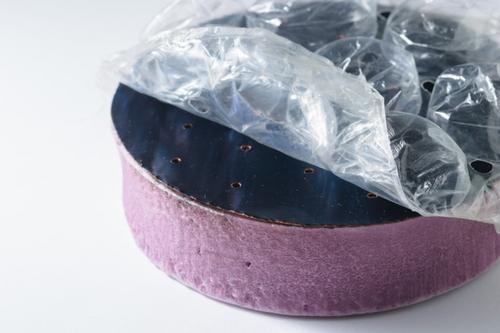Researchers at MIT have designed a bubble-wrapped sponge that uses sunlight to boil water and create steam for potential use in water treatment/desalination.
October 4, 2016
Researchers at MIT have designed a bubble-wrapped sponge that uses sunlight to boil water and create steam. The invention could have applications in water desalination and wastewater treatment, among others.
The design -- called a “solar vapor generator” -- uses a combination of relatively low-tech materials to capture ambient sunlight and concentrate it as heat rather than requires expensive mirrors or lenses for this purpose, researchers said. The heat is then directed toward the pores of the sponge, which draw water up and release it as steam.
The team published an article about their work in the journal, Nature Energy. The research was led by George Ni, an MIT graduate student; and Gang Chen, a professor of power engineering and the head of the Department of Mechanical Engineering. They collaborated with other researchers both at MIT and from the Masdar Institute of Science and Technology, in the United Arab Emirates.

Researchers at MIT have designed a bubble-wrapped sponge that could have applications in water desalination and wastewater treatment, among others. (Source: George Ni, MIT)
The design of the sponge builds on one researchers created in 2014, which was a similar floating, sponge-like material comprised of graphite and carbon foam that could boil water to 100C and convert 85% of incoming sunlight to steam. That sponge needed exposure to sunlight 10 times the intensity of sunlight in normal, ambient conditions, researchers said.
“It was relatively low optical concentration,” Chen said. “But I kept asking myself, ‘Can we basically boil water on a rooftop, in normal conditions, without optically concentrating the sunlight?’ That was the basic premise.”
Chen and the team found that the issue with the first iteration of the sponge was that while black graphite could absorb sunlight well, it also radiated the heat back out to the environment, resulting in heat loss.
They corrected this problem in the recently developed sponge by using a new material -- a spectrally selective absorber, or a thin, blue, metallic-like film that is used typically in solar water heaters. The material can absorb radiation in the visible range of the electromagnetic spectrum; however, it doesn’t radiate in the infrared range. This means it can both absorb sunlight and trap heat without the type of heat loss that resulted with the use of black graphite.
To create the solution, researchers coated a thin sheet of copper with the absorber material and mounted the structure on a thermally insulating piece of floating foam. But they were still losing heat through convection, in which moving air molecules such as wind would naturally cool the surface, they said. That is, until inspiration came from Chen’s 16-year-old daughter, who at the time was working on a school science project in which she constructed a makeshift greenhouse from simple materials, including bubble wrap.
“She was able to heat it to 160F, in winter.” Chen said. “It was very effective.”
Though skeptical at first, Ni agreed to wrap the sponge in bubble wrap at Chen’s urging. The approach let sunlight in through the material’s transparent wrapping, while trapping air in its insulating bubbles. Combined with the selective absorber, the material kept heat from escaping the surface of the sponge, allowing the copper layer to conduct the heat toward a single hole, or channel, that the researchers had drilled through the structure.
READ MORE ARTICLES ON SOLAR ENERGY:
When they placed the sponge in water, researchers found that water entered through the channel, where it was heated to 100C, then turned to steam. The sponge in tests had a conversion rate of 20% in turning the incoming sunlight to steam.
“It turns out, it works,” Ni said. “Now because of this bubble wrap, we don’t need mirrors to concentrate the sun.”
The low-tech design of the sponge could provide inexpensive alternatives for applications ranging from the desalination of water, wastewater treatment, residential water heating, and medical-tool sterilization.
However, while other solar-based technologies that rely on optical-concentrating technologies typically are designed to last 10 to 20 years, the low-tech design of the sponge would need to be replaced after one to two years, according to Ni. Still, because the more durable solutions require expensive parts and maintenance, “the cost is pretty competitive,” he said.
“It’s kind of a different approach, where before, people were doing high-tech and long-term [solar absorbers],” Ni said. “We’re doing low-tech and short-term.”
Elizabeth Montalbano is a freelance writer who has written about technology and culture for more than 15 years. She has lived and worked as a professional journalist in Phoenix, San Francisco, and New York City. In her free time she enjoys surfing, traveling, music, yoga, and cooking. She currently resides in a village on the southwest coast of Portugal.
About the Author(s)
You May Also Like



